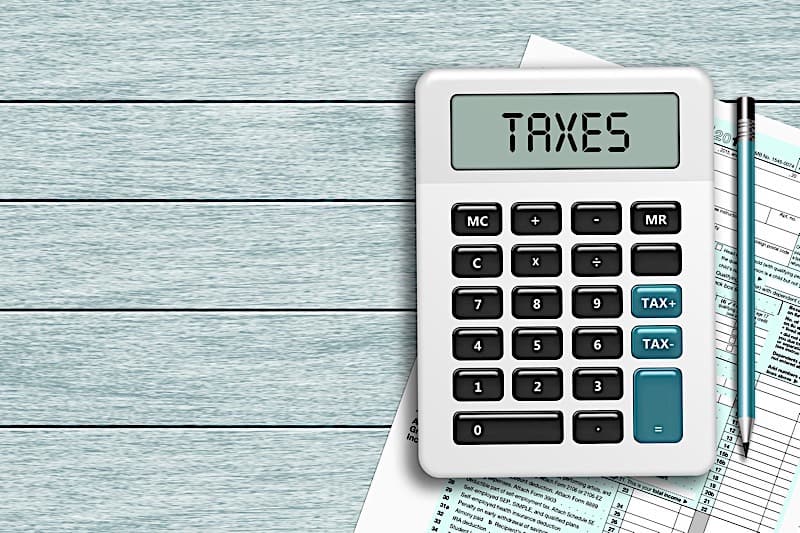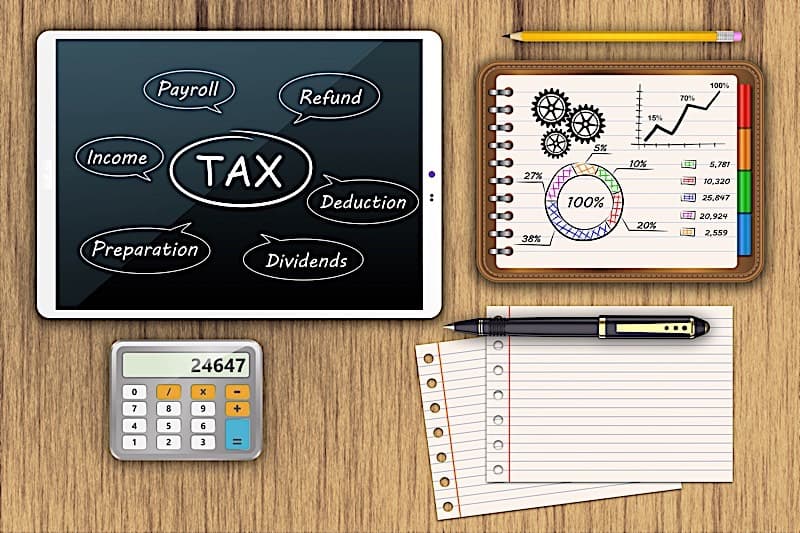What Is The Passive Income Tax Rate?

If your are deciding whether to invest in real estate actively or passively, you must first consider several factors. Active investors, for example, tend to be more hands-on and favor flips or wholesales. Passive investors, on the other hand, tend to gravitate towards buy-and-hold assets. It is also worth noting one additional difference investors need to account for: the passive income tax rate.
As you will soon discover, passive income is technically taxed a lot like active income. While the two sources of income are relatively similar, passive income awards qualifying earners with several benefits that can be realized at the time taxes are due. Keep reading to discover if you’re eligible.

Passive Income
Passive income is typically used in the real estate community to describe the profits generated as the result of little or no effort on behalf of the person receiving them. In other words, passive income is exactly what it sounds like: a stream of income that isn’t contingent on trading time for money. Subsequently, there are two kinds of passive real estate activities:
- ”Rentals, whether dealing in equipment or real estate assets, regardless of how much time is spent managing performance.
- A real estate company that makes the conscious decision to decrease their active participation on a regular, continuous, and substantial basis.”
Active Income
As the counterpart to passive income, active income represents profits earned from performing a service. Active income is, therefore, the direct result of trading time for money. In the world of real estate investing, generating active income requires investors to continually buy and sell properties; their success or failure is entirely contingent on the effort they put into a deal. That said, active income isn’t relegated to real estate investors. According to the IRS, active income may also be derived from the following activities:
- Salaries, wages and 1099 commission income
- Guaranteed payments
- Interest and dividends
- Stocks and bonds
- Sale of undeveloped land or other investment property
- Royalties derived in the ordinary course of business
- Sole proprietorship or farm in which the taxpayer materially participates
- Partnerships, S-Corporations, and limited liability companies in which the taxpayer materially participates
- Trusts in which the fiduciary materially participates
Material Vs Non-Material Income
Material and non-material income are indicators used by the IRS to determine whether or not an individual made his or her income actively or passively. More specifically, an individual’s income will be classified as either material or non-material based on the amount of time they spent working to earn it. “A trade or business activity isn’t a passive activity if you materially participated in the activity,” according to the IRS.
The government separates workers into these categories for one very specific reason: to prevent people from receiving tax breaks they don’t deserve.
According to the IRS, you are a material participant if you satisfy any of the following criteria:
- ”You contributed more than 500 hours of your own time to the respective activity.
- Your participation was substantially all the participation in the activity of all individuals for the tax year, including the participation of individuals who didn’t own any interest in the activity.
- You contributed more than 100 hours over the course of the current tax year. Not only that, but you need to have also participated at least as much as any other participant did.
- The activity is a significant participation activity, and you participated in all significant participation activities for more than 500 hours. A significant participation activity is any trade or business activity in which you participated for more than 100 hours during the year.
- You materially participated in the activity (other than by meeting this fifth test) for any 5 (whether or not consecutive) of the 10 immediately preceding tax years.
- The activity is a personal service activity in which you materially participated for any 3 (whether or not consecutive) preceding tax years. An activity is a personal service activity if it involves the performance of personal services in the fields of health (including veterinary services), law, engineering, architecture, accounting, actuarial science, performing arts, consulting, or any other trade or business in which capital isn’t a material income-producing factor.
- Based on all the facts and circumstances, you participated in the activity on a regular, continuous, and substantial basis during the year.”
If you fail to meet any of the criteria listed above, you are likely a recipient of non-material income. As such, the income you receive may be of a passive nature, and therefore, able to benefit from certain tax losses.
For a better idea of the benefits one could expect to receive from passive income, please refer to the following section.
PASSIVE INCOME TAX: BENEFITS FOR INVESTORS
For most, the greatest passive income benefit is in the name: passive income. Few benefits can compete with the idea of making money passively. However, the passive nature of this investment strategy is far from the only reason investors covet it. As it turns out, some of the greatest benefits for investors have to do with the resulting tax breaks. Let’s take a look at some of the best tax benefits for passive income investors:
- Mortgage Interest Deduction: Passive income investors are allowed to deduct the interest they pay on mortgage payments or loans to improve a subject property. Additionally, rental property owners can also deduct the interest paid on credit cards specifically used to maintain the property.
- Repair Deductions: According to the IRS, repairs can be deducted in the event they are ordinary, necessary, and within a “reasonable amount.” The costs of each respective repair can only be deducted in the year they were incurred. Common repairs that can be deducted from your taxes come April are fixing leaks, repainting, plastering, replacing broken windows and fixing floors.
- Depreciation Losses: Depreciation losses are easily one of the greatest tax benefits awarded to passive income investors. That said, rental property owners are allowed to deduct a portion of their basis (the cost of acquiring the property, minus the cost of land) each year for 27.5 years. Deductions can be made until the property is sold, the property is “taken out of service,” or the entirety of the basis has been deducted. This passive income tax benefit is to account for the perceived loss in value associated with aging assets.
Summary
Real estate investing has become synonymous with some of today’s greatest tax benefits. In fact, there’s an entire contingent of investors who invest primarily to deduct from their taxable income each and every year.
While there isn’t exactly a standard passive income tax rate per se, there are additional benefits buy-and-hold investors can claim that other investors can’t. Therefore, you may want to consider investing in a few rental properties of your own if you want to maximize next year’s tax return.
Disclaimer: The information contained herein was pulled from third party sites. Although this information was found from sources believed to be reliable, FortuneBuilders Inc. makes no ...
more


